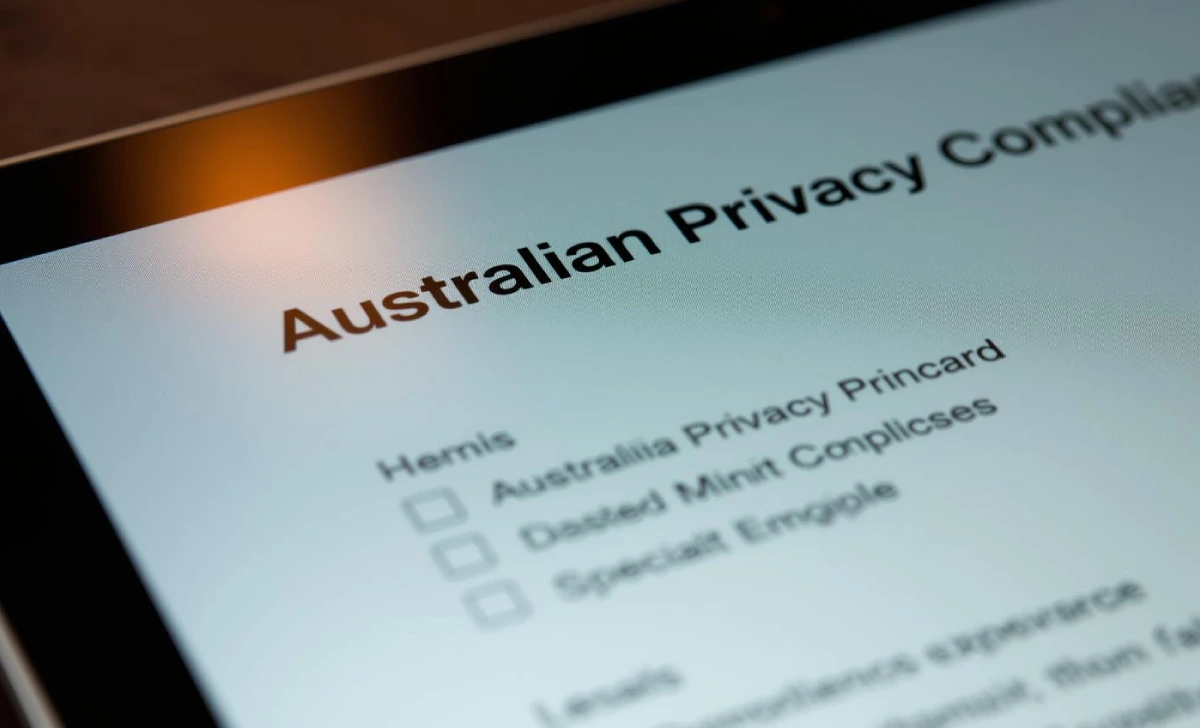Worried about cookies tracking your every move online? You’re not alone. Many Australians are concerned about digital privacy, while small business owners struggle to comply with complex requirements. The good news is that understanding cookies consent in Australia doesn’t have to be overwhelming. This guide provides clear, actionable steps you can implement today to protect your privacy and ensure your business meets Australian legal requirements.
- What Cookies and Trackers Actually Do — A Plain-English Guide
- What Australians Need to Know About Privacy Law in 2025 — Cookies Consent Australia Requirements
- How Australians Can Control Cookies Right Now — Step-by-Step for Users
- Practical Compliance Steps Small Businesses Can Take Today
- Implementing Consent Technically — Tools, Templates and Sample Copy
- FAQs
- Do I Need a Cookie Banner in Australia?
- Can I Rely on “Legitimate Interest” for Analytics Cookies?
- Are Third-Party Advertising Cookies Allowed?
- What About Google Analytics and Personal Data?
- How Long Can I Keep Cookie Data?
- Take Action on Cookie Compliance Today
Whether you’re a consumer wanting to take control of your digital footprint or a small business owner navigating privacy obligations, we’ll break down everything you need to know in plain English.
What Cookies and Trackers Actually Do — A Plain-English Guide
Cookies are small text files that websites store on your device to remember information about your visit. Think of them as digital sticky notes that help websites function properly and personalise your experience.
There are several types of tracking technologies you should know about:
- The website sets first-party cookies you’re directly visiting. These typically help with essential functions like keeping you logged in or remembering items in your shopping cart.
- Third-party cookies come from external services embedded on the website, such as advertising networks or social media widgets. These can track you across multiple websites, building detailed profiles of your browsing habits.
- Tracking pixels are tiny, invisible images that load when you visit a webpage or open an email. They collect information about your device, location, and behaviour.
Here’s a simple example: Sarah visits an online clothing store and browses winter jackets. A third-party advertising cookie notes this interest. Later, when Sarah visits a news website, she sees ads for winter jackets from various retailers — that’s cross-site tracking in action.
Cookie Types and Purposes:
- Session cookies: Temporary, deleted when you close your browser
- Persistent cookies: Remain on your device for a set period
- Analytics cookies: Track website usage and performance
- Advertising cookies: Enable targeted marketing campaigns
Understanding these distinctions helps you make informed decisions about which cookies to accept and which tracking technologies might compromise your privacy.
What Australians Need to Know About Privacy Law in 2025 — Cookies Consent Australia Requirements
Australia doesn’t have a specific “cookie law” like Europe’s GDPR, but the Privacy Act 1988 and Australian Privacy Principles (APPs) still apply to online tracking. Recent Privacy Act reforms, with the first tranche passed in 2024 and further changes coming, have strengthened privacy protections for Australians.
The Office of the Australian Information Commissioner (OAIC) has issued specific guidance on tracking pixels and privacy obligations, making it clear that websites collecting personal information through cookies must comply with transparency requirements.
Under the APPs, organisations must:
- Clearly explain what information they collect and why
- Obtain consent for sensitive information or unexpected uses
- Provide individuals with choices about how their information is used
- Implement reasonable security measures
Who Must Comply:
- Businesses with annual turnover over $3 million
- All health service providers
- Credit reporting agencies
- Any organisation trading personal information
The law applies when cookies collect “personal information” — data that can identify an individual or is reasonably identifiable when combined with other information.
For example, an Australian e-commerce site using advertising retargeting cookies to track customer behaviour across websites would need to clearly disclose this practice and, in many cases, obtain explicit consent.

What Businesses Must Do Under APPs (2025):
- Publish clear privacy policies explaining cookie use
- Provide opt-out mechanisms for non-essential tracking
- Maintain records of consent where required
- Ensure third-party vendors comply with privacy obligations
- Implement data retention limits
The OAIC emphasises that “set and forget” cookie banners aren’t sufficient — organisations must actively consider privacy by design and give individuals meaningful control over their data.
How Australians Can Control Cookies Right Now — Step-by-Step for Users
Taking control of cookies is easier than you might think. Modern browsers offer built-in privacy controls that can significantly reduce unwanted tracking.
1. Chrome Users:
- Click the three dots menu → Settings → Privacy and Security
- Select “Cookies and other site data”
- Choose “Block third-party cookies” or “Block all cookies”
- Review and delete existing cookies under “See all cookies and site data”
2. Safari Users (iPhone/Mac): Safari’s Intelligent Tracking Prevention (ITP) automatically blocks many cross-site trackers. To enhance protection:
- Go to Settings → Safari → Privacy & Security
- Enable “Prevent Cross-Site Tracking”
- Consider enabling “Hide IP Address” for additional privacy
3. Quick Mobile Privacy Tips:
- Use private/incognito browsing for sensitive searches
- Regularly clear your browsing data
- Disable location tracking for non-essential apps
- Review app permissions quarterly
4. Do This Now — 3-Step Privacy Checklist:
- Set your browser to block third-party cookies (5 minutes)
- Install a privacy extension like uBlock Origin or Privacy Badger (2 minutes)
- Review and clear existing cookies from your browser settings (3 minutes)
Privacy extensions can provide additional protection by blocking tracking scripts before they load. However, be aware that aggressive cookie blocking might break some website functionality — you can always whitelist sites you trust.
For maximum privacy during sensitive browsing sessions, use private/incognito mode, which doesn’t store cookies, browsing history, or form data after you close the window.
Practical Compliance Steps Small Businesses Can Take Today
Australian small businesses can achieve cookie compliance through a systematic approach. Here’s a practical roadmap you can implement over the next few weeks.
Week 1: Run a Cookie Audit Use free tools like Cookiebot or OneTrust’s cookie scanner to identify all cookies and tracking technologies on your website. Many business owners are surprised to discover dozens of third-party trackers they didn’t know existed.
Example audit findings for a typical Australian SME website:
- Google Analytics: 4 cookies (analytics)
- Facebook Pixel: 3 cookies (advertising)
- Mailchimp: 2 cookies (email marketing)
- Zendesk chat widget: 2 cookies (customer support)
Week 2: Map Purposes to Legal Basis: For each cookie identified, document:
- What data it collect
- Why you need it (purpose)
- Your legal basis under the APPs
- How long you keep the data
Week 3: Update Your Privacy Policy: Include a dedicated cookies section explaining: “We use cookies to improve your experience and understand how you use our site. Essential cookies keep the website functioning, while analytics cookies help us improve our services. You can control non-essential cookies through your browser settings or our preference centre.”
Week 4: Implement Consent Management: For websites collecting significant personal information or using behavioural advertising, implement a consent management platform (CMP) that allows users to:
- Accept or decline non-essential cookies
- Manage preferences granularly
- Withdraw consent easily
Small Business Compliance Checklist:
- ✓ Conduct cookie audit using automated tools
- ✓ Document all third-party integrations
- ✓ Update privacy policy with cookie information
- ✓ Review vendor data processing agreements
- ✓ Implement user consent mechanisms
- ✓ Set up data retention schedules
- ✓ Train staff on privacy procedures
Vendor Agreements: Ensure your third-party providers (analytics, advertising, email marketing) have appropriate data processing agreements that specify their privacy obligations and your shared responsibilities.
Many Australian businesses work with local web developers or digital agencies who can assist with technical implementation while ensuring compliance with local privacy requirements.
Implementing Consent Technically — Tools, Templates and Sample Copy
Technical implementation doesn’t have to be overwhelming. Here’s practical guidance for marketing teams and developers working on Australian websites.
1. Essential CMP Features:
- Granular cookie categories (essential, analytics, marketing)
- Clear accept/decline options (no pre-checked boxes)
- Easy preference management interface
- Consent logging and audit trail
- Integration with Google Consent Mode
2. Sample Cookie Banner Copy: “We use cookies to provide essential website functions and improve your experience. You can accept all cookies or manage your preferences.”
- [Accept All] [Manage Preferences] [Privacy Policy]
3. Google Consent Mode Integration: This Google framework allows your analytics and advertising tags to respect user consent choices while still providing aggregated insights. When users decline cookies, Google tools switch to privacy-enhanced measurement modes.
Basic implementation involves:
- Installing the consent mode code before other tags
- Configuring your CMP to send consent signals
- Testing that tags fire correctly based on user choices
4. Common Implementation Pitfalls:
- Loading tracking scripts before consent is obtained
- Making it harder to decline than accept cookies
- Failing to honour the withdrawal of consent
- Not providing clear information about cookie purposes
5. Sample Preference Centre Categories:
- Essential: Required for website functionality (always active)
- Analytics: Help us understand website usage (toggle option)
- Marketing: Enable personalised advertising (toggle option)
- Social Media: Allow social sharing features (toggle option)
For Google Tag Manager users, implement consent mode by setting up triggers that only fire tags when appropriate consent has been granted. This ensures compliance while maintaining measurement capabilities where permitted.
Consider using established CMP providers like OneTrust, Cookiebot, or Termly, which offer Australian-specific templates and handle much of the technical complexity.
FAQs
Do I Need a Cookie Banner in Australia?
There’s no legal requirement for a cookie banner specifically, but if you’re collecting personal information through cookies, you must provide transparency under the APPs. Many businesses use banners as an effective way to meet disclosure requirements and offer user choice.
Can I Rely on “Legitimate Interest” for Analytics Cookies?
Australian privacy law doesn’t include a “legitimate interest” basis like GDPR. You’ll need to consider whether analytics cookies collect personal information and whether users would reasonably expect this collection. Basic analytics may be acceptable, but behavioural profiling typically requires clearer consent.
Are Third-Party Advertising Cookies Allowed?
Yes, but with transparency requirements. You must clearly explain what advertising cookies do, which companies receive data, and provide users with control options. Many advertising networks offer opt-out mechanisms to help with compliance.
What About Google Analytics and Personal Data?
Google Analytics can collect personal information, particularly when combined with other data sources. Consider implementing Google Analytics 4 with enhanced privacy controls, IP anonymisation, and consent mode integration to reduce privacy risks.
How Long Can I Keep Cookie Data?
The APPs require you to destroy or de-identify personal information when it’s no longer needed for the purpose collected. Set reasonable retention periods (typically 12-24 months for analytics, shorter for advertising) and document your decisions.
Take Action on Cookie Compliance Today
Understanding cookies consent Australia requirements empowers both consumers and businesses to make informed privacy decisions. Consumers can take immediate control through browser settings and privacy tools, while businesses can achieve compliance through systematic auditing and transparent practices.
The key steps are straightforward: run a cookie audit to understand what’s actually happening on your website, update your privacy policy to reflect current practices, and implement user controls where personal information is involved.
Ready to get started? Download our free cookie audit checklist or use an automated scanning tool to see exactly what tracking technologies are active on your website. Taking these practical steps today will help ensure your privacy practices meet Australian requirements and build trust with your users.





